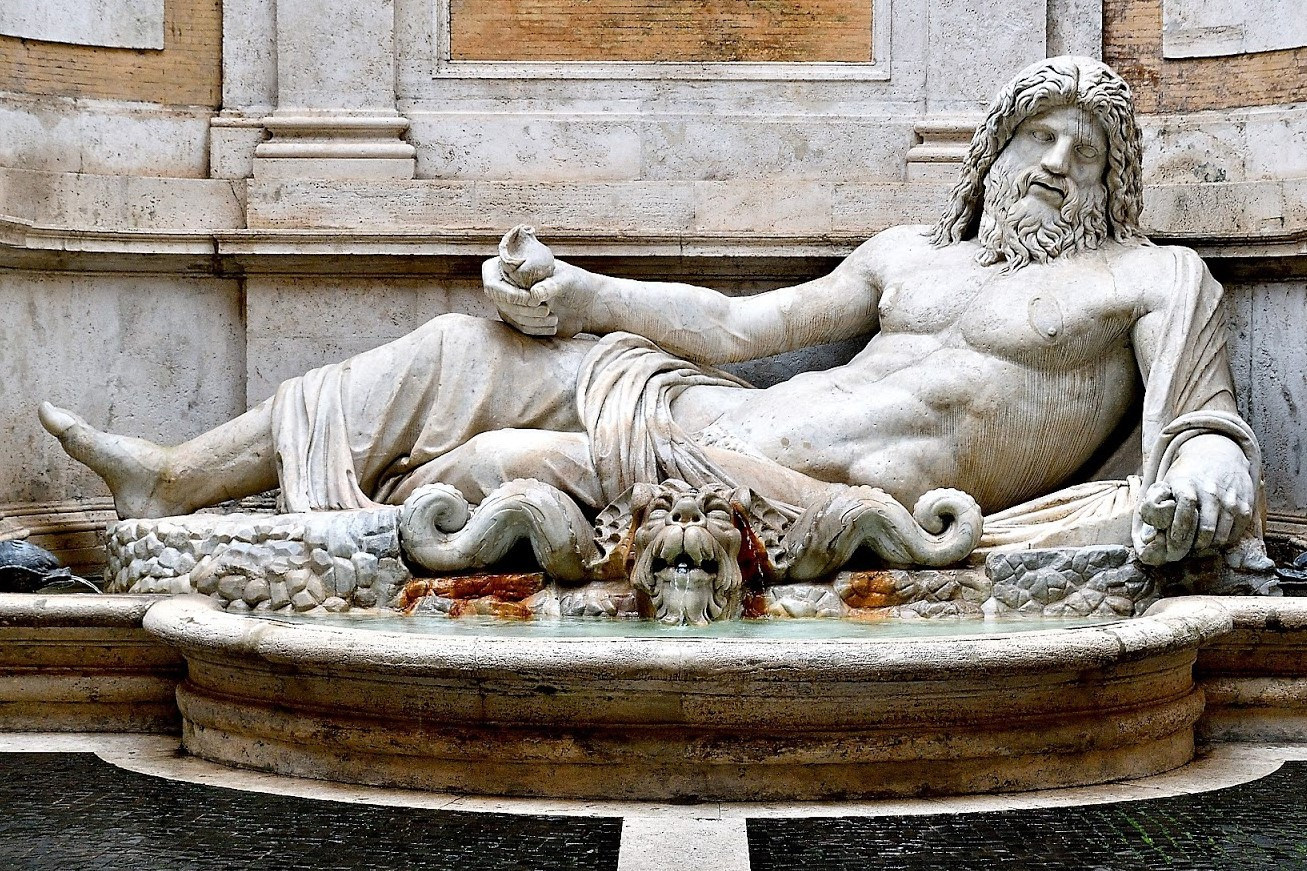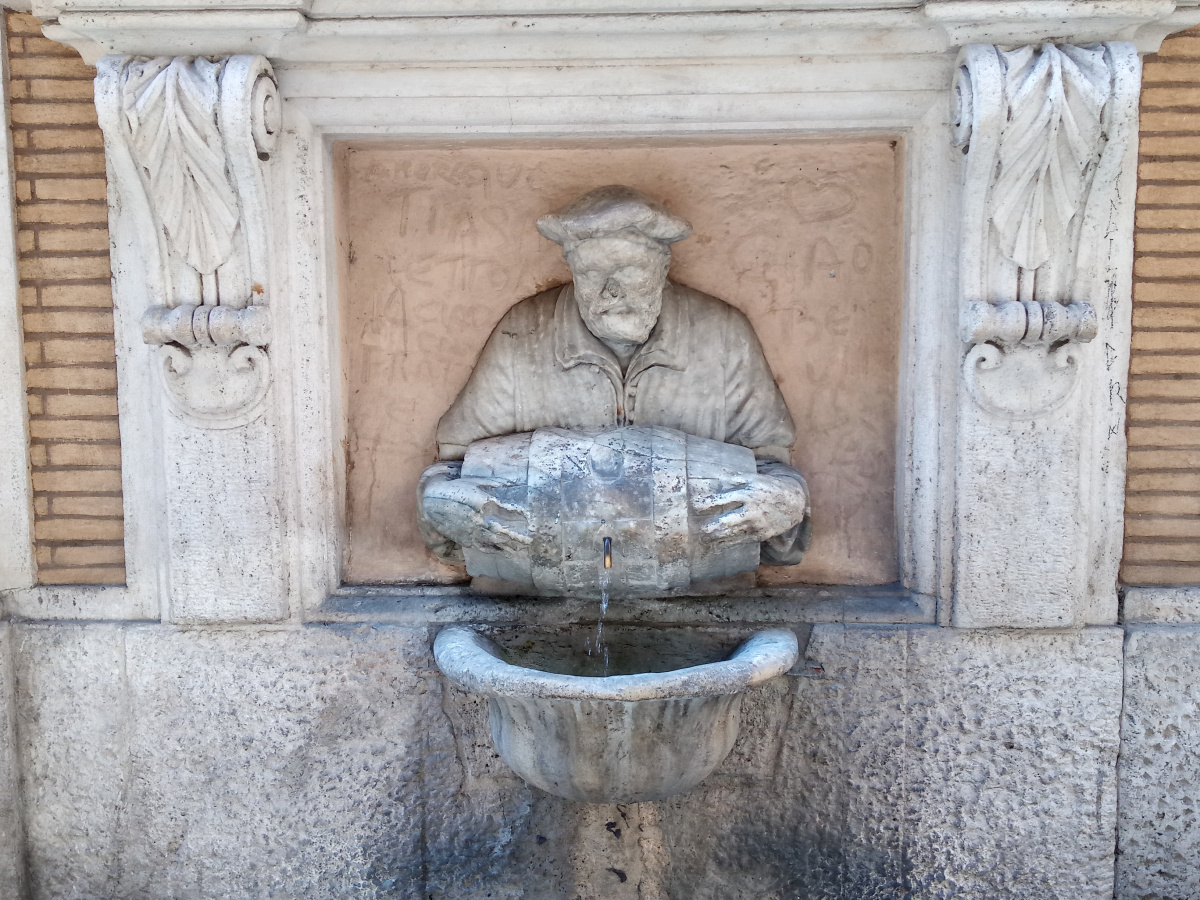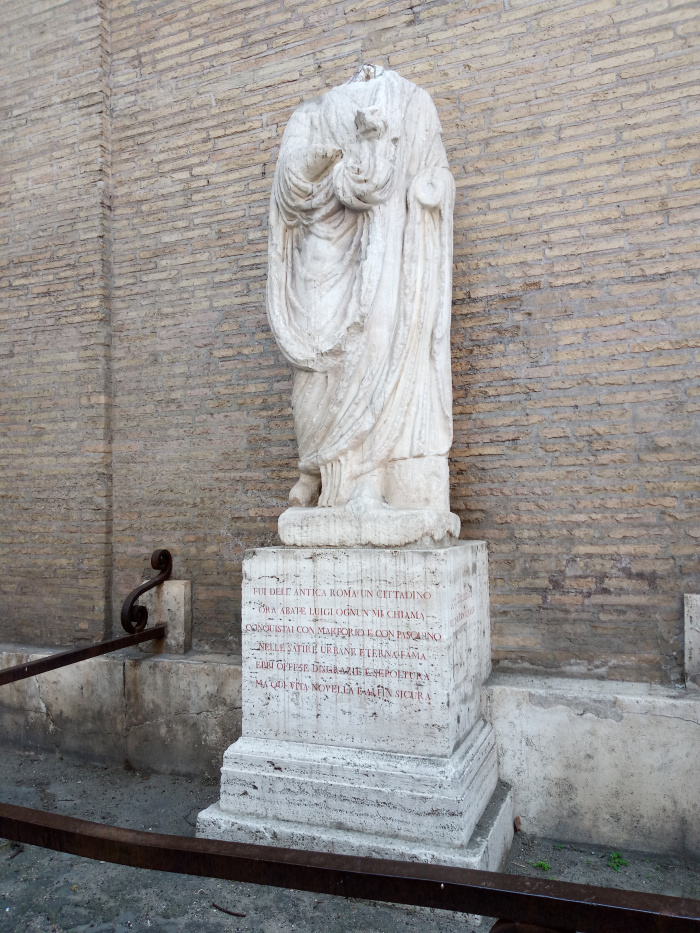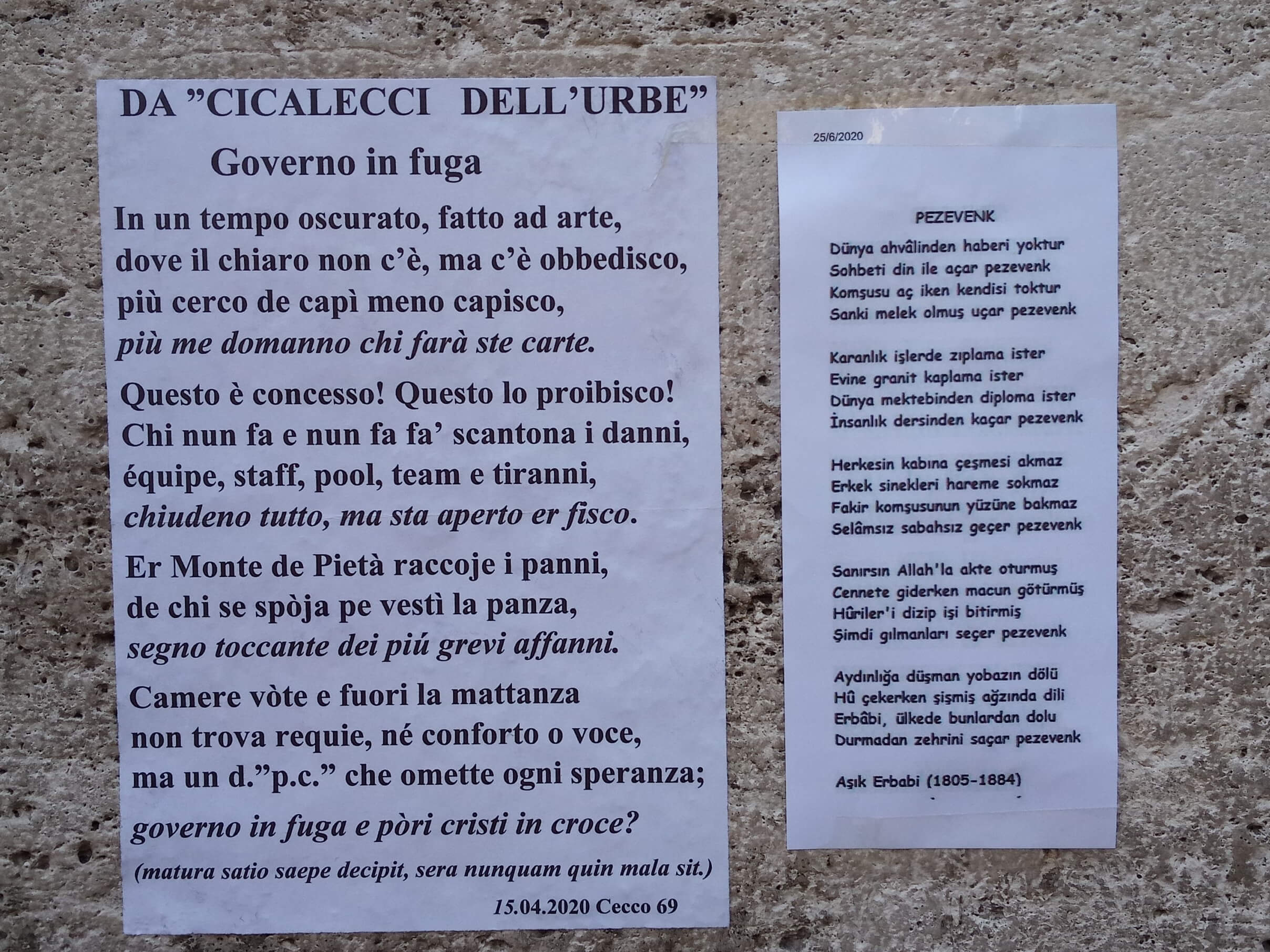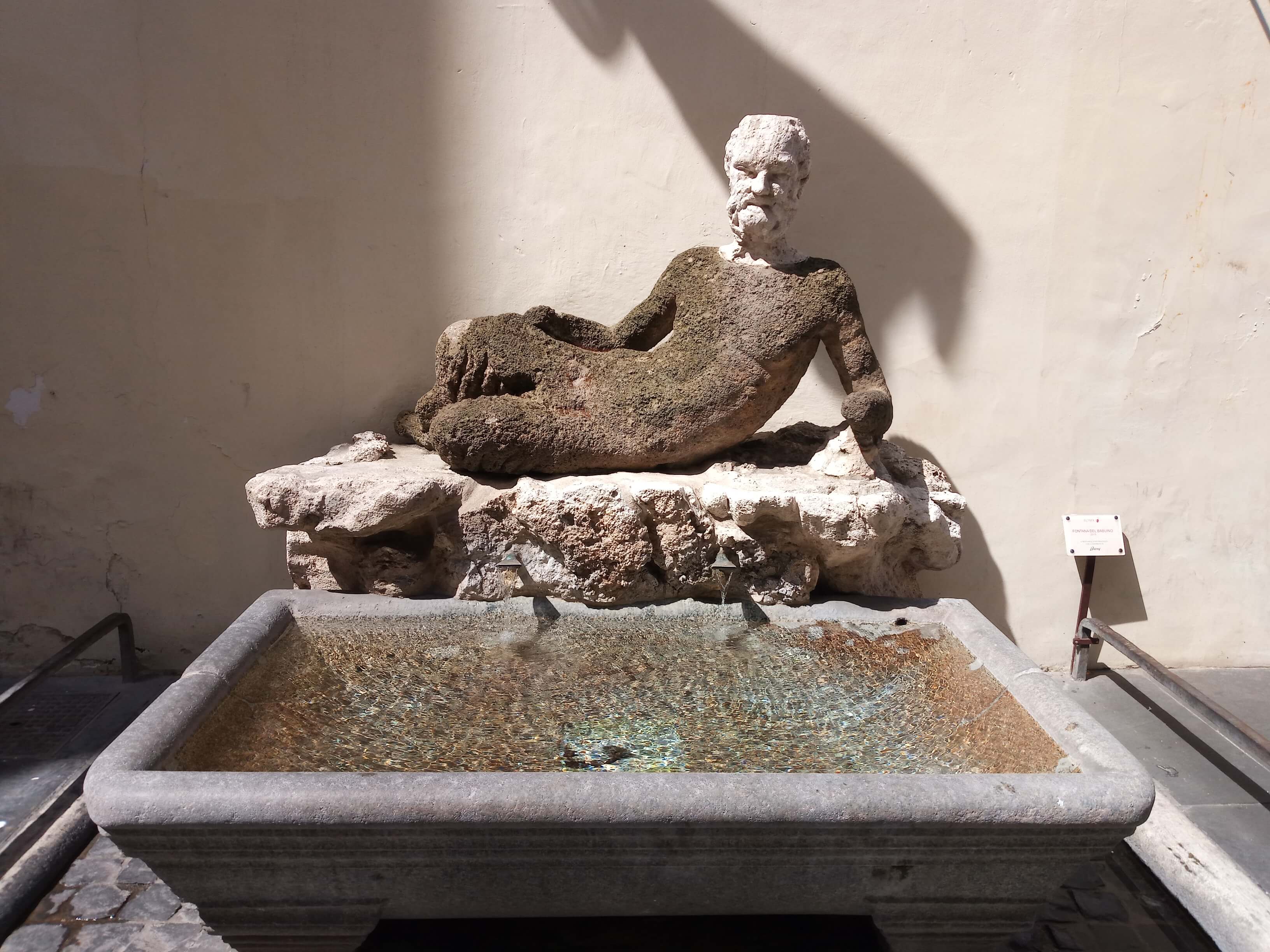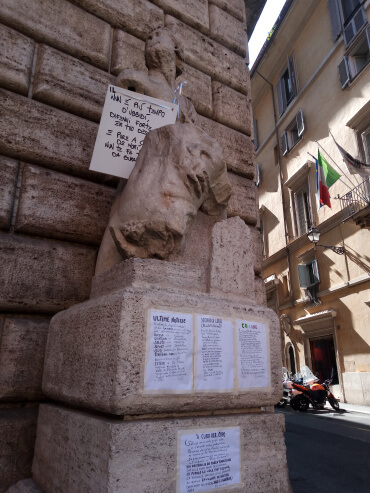
Yes, you read the title correctly. It sounded weird to me too and when I was a kid, it was actually kind of scary. If I couldn’t avoid the streets of the talking statues, or I forgot and suddenly found them in front of me, I hastened my step. I was terrified they would talk to me.
And if it happened however that during the day I walked near by, even if I held hands with my grandma, at night I dreamed they came down from the pedestal or out of the wall and ran after me with big jumps. Yes, they jumped because there are six talking statues in Rome but the ones I saw most often were three, and these three had no legs or, in the case of the so-called Abbot Luigi, the legs would be under his long tunic and therefore not visible.
The most famous talking statue in Rome is the only one of the six that still speaks and the Romans called her Pasquino. A real pop star!
This statue was found in 1501, in Piazza Navona, on the corner of Via della Cuccagna, during the renovation of Palazzo Braschi – the current space of the Museum of Rome – and most probably belonged to the sculptural groups that decorated Domitian’s Stadium (I mentioned it here).
Without legs or arms, with her face disfigured by time, they put her on the corner of Palazzo Braschi, in the current Piazza di Pasquino – which before Pasquino was called Parione – where she still stands. We don’t know why the Romans called the statue Pasquino, but very soon she began to be used to expose sharp satires against the established power and above all against the Pope’s government.
Let’s remember that Rome was ruled by the Popes until 1870 when the Unification of Italy put an end to their temporal power after more or less 12 centuries!
Even today it is not very convenient to express one’s opinion openly, if it clashes with the established power. During the Rome of the Popes, one could also lose one’s life. If from Piazza di Pasquino, you cross Corso Vittorio Emanuele II and go to Campo de’ Fiori for example – five minutes walking – you will see with your eyes what I am talking about! In the center of the famous market square indeed, there is the statue of Giordano Bruno, burned at the stake right there for openly saying what he thought.
Under the Papal State, literate citizens, who wanted to express their ideas and wished to remain alive, used Pasquino. Anonymously they wrote their discontent and attached it on the neck of the statue at night.
The next morning, everyone ran to see what Pasquino had said and in vain the Pope’s guards looked for the authors of those critics. Pasquino said it! “Vox populi” (latin: people’s voice)! And so the government knew what the people thought of it. These satirical attacks against power are called “Pasquinate” in Rome.
And when the popes decided to have Pasquino watched by night guards? The Romans hung their critics on other statues. That’s why there are six talking statues!
Even today, if you have something to say against your governments, you can write it on paper and hang it on Pasquino’s neck. Don’t write your name because the statue will be responsible for your words!
The other talking statues I often came across are Madama Lucrezia, so called by the people of Rome but actually is the remains of a statue of Isis and Abbot Luigi, perhaps belonging to the decorative apparatus of the Theatre of Pompey, now located in Piazza Vidoni on the side of the Church of Sant’Andrea della Valle.
Below, in the Gallery, I provide you the names and addresses of the others in case you want to greet them next time you are in Rome…
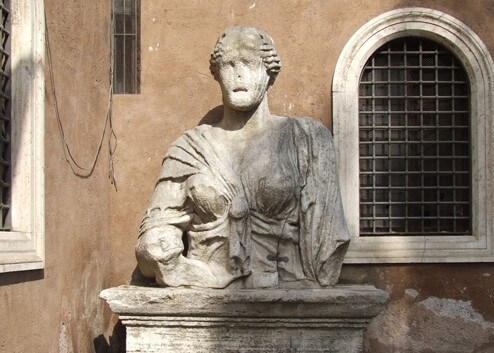

Federica
